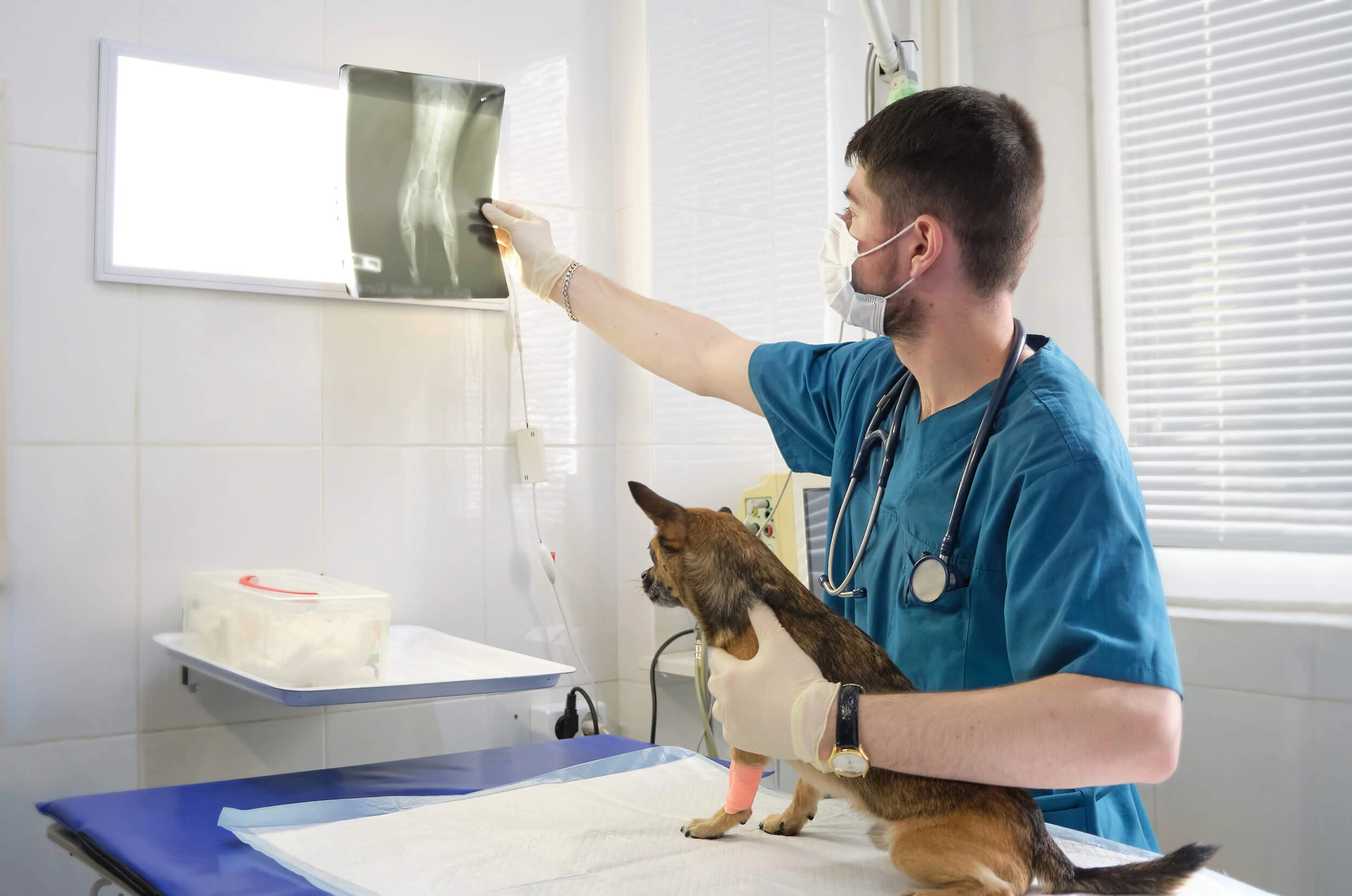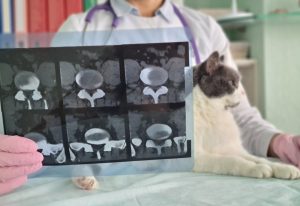
Expert radiology insights are no longer just for big veterinary hospitals. Thanks to veterinary teleradiology, clinics of all sizes can now get fast, specialist interpretations of X-rays, CT scans, MRIs, and ultrasounds—without needing an in-house radiologist. This game-changing technology is improving diagnostic accuracy, efficiency, and patient care.
Teleradiology began in human medicine, with early experiments in remote image transmission dating back to the 1940s. But it wasn’t until the late 20th century—when digital imaging and high-speed internet took off—that it became widely used. Veterinary teleradiology followed suit, gaining traction in the early 2000s as imaging technology advanced.
Today, veterinary teleradiology services play a key part in veterinary diagnostics, allowing veterinarians to provide faster, more accurate care for their patients.
How Veterinary Teleradiology Works
The teleradiology service process begins when a veterinarian captures a diagnostic image using digital radiography, computed tomography (CT), or magnetic resonance imaging (MRI). These images are stored in a digital format and transmitted via a secure, cloud-based platform to a veterinary radiologist for interpretation.
Digital Imaging and Communications in Medicine (DICOM) serves as the standard for storing and transferring these images. This facilitates compatibility across different imaging systems, enabling seamless transmission between veterinary clinics and radiologists. Once the images are received, a radiologist examines them and provides a detailed report, which is then sent back to the referring veterinarian – often within hours.
Protecting sensitive medical information is a critical aspect of veterinary teleradiology. Clinics must adhere to regulations such as the Health Insurance Portability and Accountability Act (HIPAA) in the U.S. and other data protection laws worldwide. Encryption, secure servers, and multi-factor authentication all help maintain data security while supporting the seamless use of remote diagnostic services.
Benefits of Veterinary Teleradiology
One of the most significant advantages of veterinary teleradiology is its ability to enhance diagnostic capabilities. Many clinics lack in-house radiologists, making complex cases difficult to interpret accurately. With remote radiology services, veterinarians can consult specialists for second opinions and more precise diagnoses, leading to better treatment decisions.
From a financial perspective, teleradiology helps veterinary practices reduce operational costs. Hiring a full-time radiologist may not be practical for smaller clinics, but outsourcing radiograph interpretation services allows them to access expert diagnostics without incurring the expense of an in-house specialist. The rapid turnaround time of remote radiology reports also streamlines workflow efficiency, improving overall service quality.
Faster diagnoses ultimately enhance patient care. In emergency situations, having access to quick and accurate imaging interpretations can make a life-saving difference. Pet owners benefit from faster answers and targeted treatment plans, which improve their experience with the veterinary practice as well.
Challenges and Limitations of Veterinary Teleradiology
Despite its many advantages, veterinary imaging does come with challenges. One of the primary hurdles is the initial adoption process, as some clinics may struggle to integrate digital imaging systems or adjust to remote diagnostics. Investing in the necessary technology and training staff to use these systems effectively requires time and financial resources.
Technical issues – such as poor internet connectivity or compatibility problems with imaging software – can pose difficulties as well. Image quality must remain high throughout transmission, as any degradation can impact diagnostic accuracy.
Compliance and data security present yet another challenge. Veterinary clinics must adhere to privacy regulations to protect patient data, and failure to do so could result in legal and ethical issues. That said, choosing a reliable veterinary diagnostic imaging provider that prioritizes secure data handling can help mitigate these risks.
Future Trends in Veterinary Teleradiology
The future of veterinary teleradiology services is being shaped by several technological advancements. One of the most promising developments is the evolution of veterinary imaging technology. Higher-resolution scans, improved 3D imaging, and advanced contrast techniques are making veterinary diagnostics even more precise.
Artificial intelligence (AI) and machine learning are also becoming integral to veterinary diagnostics. AI-powered algorithms can analyze images, flagging potential abnormalities and assisting radiologists in detecting conditions faster. While AI is not expected to replace human expertise, it serves as a valuable tool for improving diagnostic accuracy and efficiency.
Mobile applications for teleradiology are another emerging trend. With the rise of telemedicine, veterinarians are seeking convenient ways to access radiology reports on the go, making mobile-friendly platforms an area of focus for software developers.
Integrating Teleradiology into Veterinary Practice
For clinics looking to incorporate veterinary diagnostic imaging, careful planning is crucial. The first step is selecting a reliable provider that offers high-quality interpretations with fast turnaround times. This decision can significantly impact the efficiency of the veterinary practice and the level of patient care provided.
Seamless technology integration is essential for veterinary clinics adopting teleradiology. Investing in imaging systems that align with remote diagnostics and implementing secure data transfer solutions allows for smooth collaboration between veterinarians and radiologists. Equally important is staff training on best practices for image capture and transmission, supporting accurate and efficient workflows.
Maintaining high-quality standards in veterinary teleradiology requires strong quality control protocols and adherence to regulatory guidelines. Clinics can enhance their use of remote diagnostics by partnering with radiology specialists to establish best practices, conduct regular audits, and provide ongoing staff education.
Expert Teleradiology Services from AxisVet
Veterinary teleradiology is transforming diagnostics, giving clinics direct access to specialized radiologists who deliver precise imaging interpretations. This capability enhances patient care by helping veterinarians make more confident, informed decisions – often in a fraction of the time it would take with traditional methods.
AxisVet is at the forefront of this revolution, offering veterinary teleradiology services that prioritize accuracy, efficiency, and accessibility. Our team of board-certified radiologists provides detailed interpretations with fast turnaround times, helping clinics improve workflow and patient outcomes. With seamless digital integration and a commitment to high-quality diagnostics, we simplify remote radiology for veterinary practices of all sizes.
As AI-powered tools and advanced imaging techniques continue to shape the future of veterinary medicine, AxisVet remains dedicated to keeping clinics ahead of the curve. Whether you’re looking to streamline radiograph interpretations, reduce costs, or improve diagnostic accuracy, our expertise can help.
For veterinary practices ready to integrate professional teleradiology into their workflow, we offer the guidance and support needed to get started. Contact our team today to explore customized solutions for your clinic.




